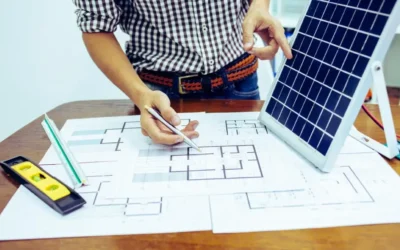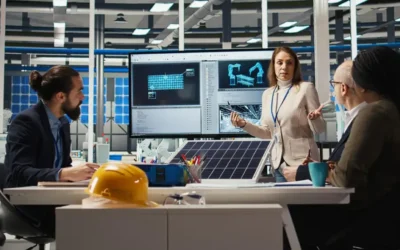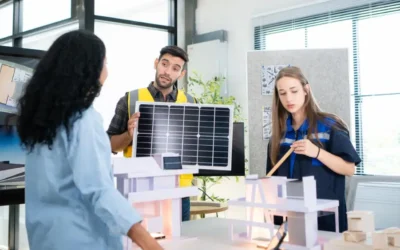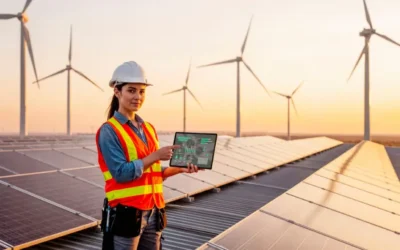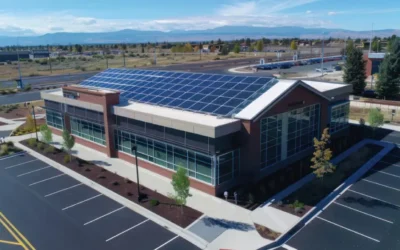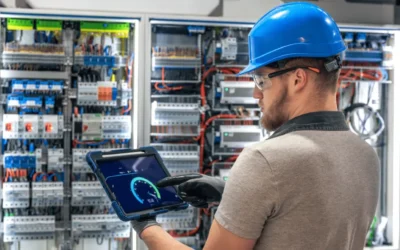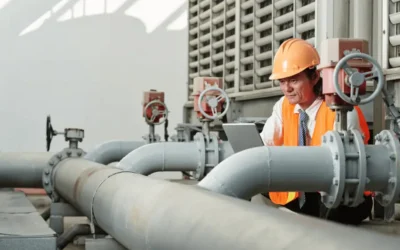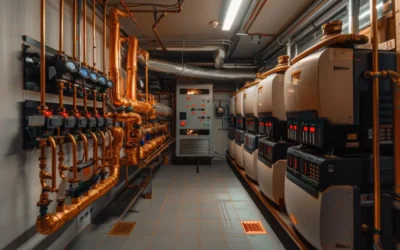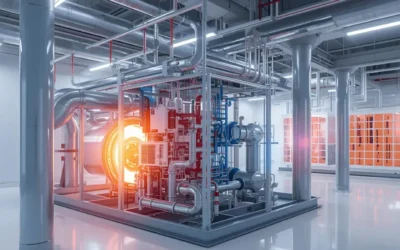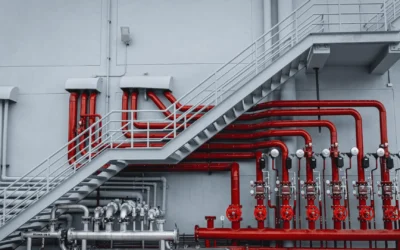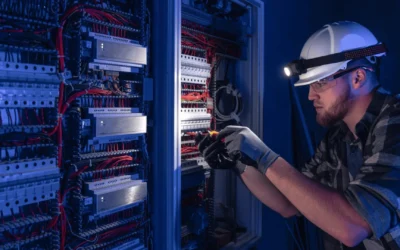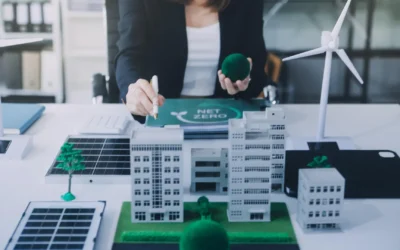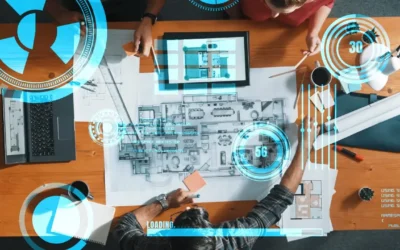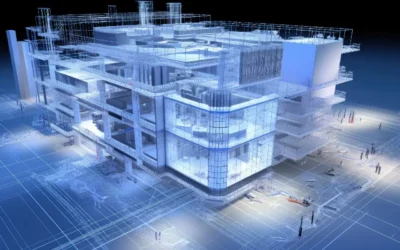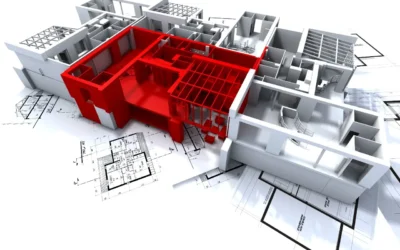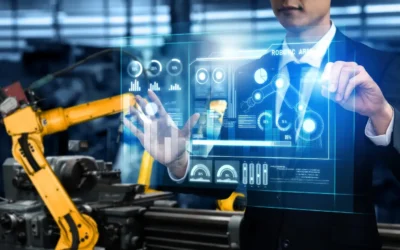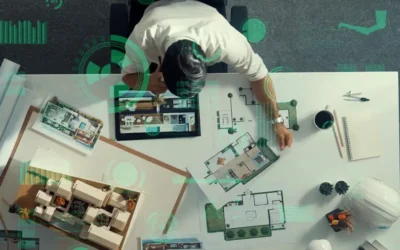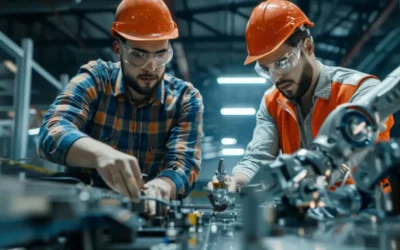Introduction: The Role of Precision in Solar PV Projects In solar energy projects, precision is paramount. Accurate Solar PV Layout & Engineering Drawings ensure every component is optimally positioned, enhancing energy yield, safety, and operational efficiency....
Blog
Explore Our Blog Categories
Why a Solar PV Feasibility and Design Study is Crucial Before Installation
Introduction: The Strategic Importance of Solar PV Feasibility and Design Study Investing in solar energy is a significant decision, and success hinges on detailed planning. A Solar PV Feasibility and Design Study ensures that every aspect of your solar installation...
How Solar PV Design Build Projects Streamline Solar Installations
Introduction: The Rise of Solar PV Design Build Projects The solar industry is evolving rapidly, and Solar PV Design Build Projects are transforming the way installations are executed. This integrated approach streamlines the entire process, from concept to...
Top Qualities to Look for in a Leading Solar Engineering Design Firm
Introduction: The Growing Demand for Solar Engineering Design Firms As solar energy adoption surges, the demand for a proficient Solar Engineering Design Firm has never been higher. Businesses and homeowners alike are seeking trusted experts who can transform sunlight...
Utility-Scale Solar Engineering Design: What You Need to Know Before Your Project
Introduction: The Importance of Utility-Scale Solar Engineering Design Utility-scale solar projects are transforming energy landscapes worldwide. Meticulous Solar Engineering Design is critical to ensure maximum energy yield, system reliability, and financial return....
How to Find the Best Solar PV Design Consultant
Introduction: Why a Solar PV Design Consultant is Crucial Selecting the right Solar PV Design Consultant can dramatically influence the success of your solar project. An adept consultant not only ensures system efficiency but also maximizes long-term savings while...
A Complete Guide to Photovoltaic System Design Engineering for Your Project
Introduction: The Imperative of Photovoltaic System Design Engineering As energy demands surge and sustainability becomes paramount, precise Photovoltaic System Design Engineering has emerged as a pivotal solution. Effective design engineering ensures that solar...
How Solar Photovoltaic Design Engineering Services in Los Angeles Can Cut Your Energy Costs
Introduction: The Rising Demand for Sustainable Energy in Los Angeles Los Angeles is experiencing a paradigm shift in energy consumption. Rising electricity bills, environmental concerns, and state mandates are propelling homeowners and businesses alike to seek...
How Commercial Solar PV Design Can Transform Your Business Energy Strategy
Introduction: The Shift Toward Commercial Solar PV Design Commercial enterprises are increasingly recognizing the strategic advantages of Solar PV Design. Beyond reducing energy costs, it enables operational sustainability, environmental responsibility, and enhanced...
Rooftop Solar PV Design Services: Maximizing Energy Output for Your Building
Introduction: The Growing Importance of Rooftop Solar PV Design Services Rooftop solar solutions are no longer a luxury—they are a strategic imperative. Businesses and homeowners are leveraging Rooftop Solar PV Design Services to reduce electricity costs, increase...
MEP Design Considerations for Schools and Universities
Educational facilities are more than just buildings—they are dynamic environments that shape the learning experience, influence productivity, and promote well-being. From classrooms and labs to dormitories and auditoriums, schools and universities require...
MEP Solutions for High-Rise Residential Projects
High-rise residential buildings are the heartbeat of modern urban living—vertical communities that combine functionality, comfort, and sustainability within limited footprints. Yet, behind the elegant architecture and panoramic views lies a complex web of systems that...
How MEP Engineers Can Reduce Carbon Footprints in Commercial Buildings
With climate change at the forefront of global priorities, businesses across industries are facing mounting pressure to lower their environmental impact. Commercial buildings—responsible for nearly 40% of global energy-related CO₂ emissions—are a major part of this...
How Electrical Design Impacts LEED Certification
Sustainability has become the cornerstone of modern building design, and LEED (Leadership in Energy and Environmental Design) certification is one of the most recognized ways to measure it. While architectural and mechanical design often take center stage in achieving...
Commercial Building MEP Upgrades That Improve ROI
In commercial real estate, profitability doesn’t only come from location and occupancy rates—it’s also driven by building performance. Outdated Commercial building MEP mechanical, electrical, and plumbing (MEP) systems can silently drain revenue through inefficiency,...
Code-Compliant Fire Safety Engineering in California
Fire safety isn’t just a building requirement in California—it’s a matter of public trust, resilience, and legal responsibility. With the state’s history of wildfires, dense urban environments, and stringent building codes, fire protection engineering plays a crucial...
Plumbing Engineering Tips for Healthcare and Hospitality Facilities
In both healthcare and hospitality settings, plumbing systems do much more than deliver water—they directly influence safety, hygiene, and comfort. Whether it’s a hospital’s sterile operating suite or a luxury hotel’s spa, plumbing engineering plays a crucial role in...
LEED-Certified Building Designs: How MEP Engineering Makes a Difference
Sustainability is no longer just a design preference—it’s a global imperative. As organizations worldwide aim to reduce their carbon footprints, LEED-certified buildings have become the benchmark for sustainable architecture. But while the design aesthetics often get...
Integrating Smart Building Technology into Modern MEP Systems
In today’s rapidly advancing world, commercial buildings are evolving beyond concrete, steel, and glass—they’re becoming intelligent ecosystems. Smart building technology is transforming how mechanical, electrical, and plumbing (MEP) systems are designed, monitored,...
Top HVAC Design Trends for Commercial Buildings in 2025
As we move deeper into 2025, commercial building owners and facility managers are placing greater emphasis on energy efficiency, sustainability, and occupant comfort. These priorities are driving innovation in heating, ventilation, and air conditioning (HVAC) design....
Healthcare MEP Design Secrets: Creating Safer and More Comfortable Patient Spaces
Introduction Hospitals and healthcare facilities demand more than traditional engineering—they require precision, reliability, and patient-focused design. Healthcare MEP design plays a critical role in ensuring that medical environments are safe, efficient, and...
How to Choose the Best Engineering Firm for Sustainable Building Design
Introduction Sustainable construction is no longer optional—it’s a necessity. From energy efficiency to long-term cost savings, buildings designed with sustainability in mind deliver measurable benefits. However, achieving these outcomes requires expertise. Selecting...
Industrial Innovation: Why MEP Design Services Are the Backbone of Modern Manufacturing
Introduction In today’s competitive industrial landscape, efficiency, reliability, and sustainability are essential. Behind every high-performing manufacturing facility lies a well-engineered infrastructure, and MEP design services for industrial operations play a...
10 Sustainable Design Principles Transforming Tomorrow’s Cities
Introduction The cities of tomorrow will be defined not just by their architecture but by their sustainability. Sustainable design principles are at the core of this transformation, shaping urban spaces that are energy-efficient, resilient, and people-focused. From...
Architectural Lighting Design Services in Los Angeles: Creating Iconic Skylines with Budlong
Introduction Los Angeles is a city defined by its skyline—an ever-evolving canvas of architectural expression and innovation. While building form and structure shape the physical landscape, lighting gives it character after dark. From glowing skyscrapers in Downtown...
Commercial Plumbing Design Mistakes That Cost Developers Millions
Introduction Behind the walls of every modern building lies a system that determines comfort, hygiene, and functionality: plumbing. While it may not be the most visible aspect of construction, poor commercial plumbing design can lead to catastrophic outcomes. From...
MEP in Construction: 5 Ways It Drives Efficiency and Cuts Costs
Introduction Behind every successful building project lies a hidden backbone: MEP in construction. Short for mechanical, electrical, and plumbing systems, MEP engineering is central to how efficiently and cost-effectively a structure operates. While architectural...
Fire Protection Engineering Explained: How to Safeguard Modern Buildings
Introduction When it comes to modern construction, safety is non-negotiable. One of the most critical aspects of building design is Fire Protection Engineering—a discipline that ensures people, property, and operations are protected from the devastating impacts of...
The Future of Sustainable Lighting Design: Smarter, Greener, Brighter Spaces
Introduction Lighting is no longer just about illumination—it’s about efficiency, well-being, and environmental responsibility. The rise of sustainable lighting design is transforming how architects, engineers, and developers approach projects. From commercial offices...
7 Reasons Data Center Power Systems Fail — And How Budlong MEP Engineers Prevent It
Introduction In today’s digital economy, data center power systems form the backbone of every industry that depends on secure and continuous operations. From healthcare to finance, even a few minutes of downtime can lead to millions in losses. Yet despite heavy...
MEP Design Services for Healthcare: Creating Safe, Sustainable, and High-Performance Facilities
Introduction: Engineering the Future of Healthcare Spaces Healthcare facilities operate at the intersection of patient care, technology, and safety. From large hospitals to outpatient clinics, every square foot requires highly specialized systems that guarantee...
MEP Design Services for Hospitality: Innovating Guest Experiences with Smart Engineering
Introduction: Engineering the Heart of Guest Experience In the world of hospitality, every detail matters. From the comfort of a guestroom to the atmosphere of a restaurant or the reliability of conference facilities, hotels and resorts rely on invisible yet essential...
MEP Design Services for Aviation: Engineering Efficiency in Modern Airports
Introduction: Airports as Engines of Connectivity Airports are more than transit hubs—they are complex ecosystems that require seamless engineering to serve millions of passengers, support nonstop operations, and meet strict safety standards. From expansive terminals...
MEP Services in San Francisco: Building Sustainable Urban Infrastructure with Innovation
Introduction: The Pulse of Innovation in San Francisco San Francisco is one of the most complex and exciting urban landscapes in the world. Its mix of historic architecture, high-rise residential towers, and cutting-edge commercial spaces presents unique challenges...
MEP Services in San Jose: Integrating Smart Engineering for Silicon Valley’s Future
Introduction: San Jose at the Heart of Silicon Valley San Jose, the largest city in Northern California’s Silicon Valley, is a global center of technology, innovation, and rapid growth. The city’s development is shaped by high-tech campuses, residential communities,...
MEP Services in Northern California: Supporting Net-Zero and Climate-Resilient Projects
Northern California is a region defined by contrasts—bustling cities like San Francisco and San Jose, rural communities across the Central Valley, and coastal areas exposed to environmental change. With the state’s commitment to carbon neutrality by 2045 and the...
MEP Services in Glendale: Powering Growth in Residential and Commercial Spaces
Introduction: Glendale’s Expanding Skyline Glendale, nestled in Los Angeles County, has become one of Southern California’s most dynamic cities for both residential and commercial development. With its vibrant downtown, mixed-use complexes, and expanding...
MEP Services in Fremont: Engineering Smarter, Greener, and Future-Ready Facilities
Introduction: Fremont’s Growth and the Need for Smarter Engineering Fremont, located in the heart of the San Francisco Bay Area, has become one of California’s fastest-growing innovation hubs. From tech-driven campuses and residential communities to healthcare and...
MEP Services in Camarillo: Transforming Local Infrastructure and Smart Development
Introduction: Building Smarter in Camarillo Camarillo, a growing city in Ventura County, is embracing smart development and sustainable infrastructure to support its expanding residential, commercial, and institutional sectors. With California’s ambitious climate...
MEP Services in Los Angeles: Driving Sustainable Building Performance Across Southern California
Introduction: Building Smarter in Southern California Los Angeles and the greater Southern California region are witnessing a major transformation in the way buildings are designed, constructed, and operated. With increasing focus on sustainability, energy efficiency,...
From Downtown Towers to Healthcare Campuses: Budlong’s Diverse MEP Work in Los Angeles
Los Angeles is a city of dynamic growth—home to luxury high-rises, massive healthcare campuses, and a booming commercial sector. At the core of these structures is one critical foundation: MEP services. Budlong has become a go-to partner for developers and...
Why Developers in Glendale Rely on Budlong for End-to-End MEP Services
For property developers in Glendale, navigating complex construction demands requires reliable, streamlined support. That’s why many turn to Budlong for comprehensive MEP services—a trusted partner known for delivering precision, performance, and cost-efficiency...
How Accurate MEP Drafting Services Improve Construction Coordination and Cost Control
In today’s fast-paced construction environment, precision is everything. Accurate MEP drafting services not only support seamless coordination between project teams but also serve as a crucial cost-saving tool across all stages of a build. Whether for large-scale...
Integrating Fire Safety Engineering Early in MEP Design: A Must for Code Compliance
When designing modern buildings, safety isn’t just a consideration—it’s a mandate. One of the most critical aspects of ensuring occupant protection and legal compliance is the early integration of fire safety engineering within the MEP (Mechanical, Electrical, and...
Why Commissioning Services Are Crucial for Building Performance Verification
Modern buildings demand more than just efficient design—they require guaranteed performance. This is where commissioning services come into play. From verifying systems during construction to ensuring optimal operations post-occupancy, commissioning ensures that...
The Rise of Low-Voltage and Smart Technology Solutions in MEP Engineering
Modern buildings are no longer just about structure—they’re about intelligence. The integration of technology solutions in MEP (Mechanical, Electrical, and Plumbing) engineering has led to smarter, safer, and more efficient spaces. From energy management to...
Designing Net-Zero Facilities with Integrated Sustainable Engineering Solutions
The built environment plays a significant role in global carbon emissions. In response, a growing number of projects are aiming for net-zero energy and even net-zero carbon status—ambitious goals that require more than just efficient equipment or renewable energy....
How MEP Plumbing Services Support Water Conservation in Building Design
As water scarcity becomes a growing concern across California and beyond, sustainable building design must prioritize water efficiency from the ground up. A critical but often underappreciated aspect of this effort lies in effective plumbing services. By designing...
Reimagining HVAC Systems: Mechanical Engineering Solutions for Modern Buildings
As modern buildings evolve to become smarter, greener, and more efficient, so too must the systems that support them. At the core of this evolution are mechanical engineering solutions, which drive the design and functionality of HVAC systems in commercial,...
MEP Engineering for Modular Housing: California’s Affordable Housing Answer
The urgent need for affordable housing in California has propelled modular construction into the spotlight. Faster to build, more cost-effective, and less disruptive to communities, modular housing is proving to be a practical solution for addressing the state’s...
Beyond Blueprints: How Integrated MEP Services Drive Smarter Building Performance
The modern built environment demands more than just bricks and beams—it requires intelligence, efficiency, and adaptability. At the heart of this transformation lies the integration of MEP services, which encompass mechanical, electrical, and plumbing systems. While...
What Sets Top Electrical Engineering Firms Apart: Lessons from Budlong’s 65+ Years of Innovation
In today’s fast-paced, tech-driven world, electrical engineering firms play a critical role in powering our buildings, cities, and infrastructure. But among hundreds of players in the industry, what truly sets the top firms apart? The answer lies in a combination of...
Inside the Engine Room: What Sets Leading MEP Engineering Firms Apart in Today’s Built Environment
In the complex world of modern construction, MEP engineering firms serve as the invisible force driving building performance, sustainability, and user comfort. MEP—standing for Mechanical, Electrical, and Plumbing—systems form the backbone of any functional structure,...
The Strategic Value of MEP Consultants in Early-Stage Project Planning
In today’s fast-paced and efficiency-driven construction industry, early-stage planning is more than a preliminary formality—it is the foundation of long-term project success. One of the most underrated yet powerful elements of this stage is the involvement of MEP...
Bridging Design and Delivery: How MEP Construction Expertise Shapes High-Performance Buildings
Introduction In today’s built environment, high-performance buildings are no longer a luxury—they are a necessity. From energy efficiency and sustainability to occupant health and long-term operational value, the expectations from commercial and residential...
Integrating Digital Twin Technology in MEP Engineering: Enhancing Building Performance
In today’s fast-paced AEC (Architecture, Engineering, and Construction) industry, innovation is no longer a luxury—it's a necessity. One of the most groundbreaking shifts in this space is the integration of Digital Twin technology in MEP Engineering. As smart...
Leveraging 5D BIM for Cost-Effective MEP Project Management
Building Smarter, Spending Better: 5D BIM in MEP Project Management The complexity of modern construction demands more than just innovative design—it requires intelligent, data-driven project management. In the realm of MEP (Mechanical, Electrical, and Plumbing)...
The Future of Water Conservation in MEP Engineering
Flowing Toward the Future: Water Conservation in MEP Engineering In an era where environmental sustainability is not just a trend but a global necessity, MEP engineering plays a pivotal role in reshaping how we use and conserve water. With growing concerns over water...
Enhancing Indoor Air Quality Through Innovative MEP Solutions
Breathe Easy: How Innovative MEP Solutions Are Redefining Indoor Air Quality In the wake of global health awareness and a renewed focus on wellness, indoor air quality (IAQ) has emerged as a critical priority in building design. From corporate campuses to healthcare...
Implementing Smart Building Technologies in MEP Design
Building Smarter: The Role of Smart Technology in MEP Design The future of building design is not only sustainable—it’s intelligent. As real estate and infrastructure trends shift toward enhanced efficiency and user experience, smart building technologies are taking...
Designing Resilient MEP Systems for Climate Change Adaptation
As climate change accelerates, buildings must be designed not only for functionality and comfort but also for resilience. MEP systems—which encompass mechanical, electrical, and plumbing components—are at the heart of a building’s performance and are often the most...
Advancements in Building Information Modeling (BIM) for MEP Coordination
Building Information Modeling (BIM) has revolutionized the construction industry, transforming how buildings are designed, constructed, and managed. As construction projects become increasingly complex, especially in MEP coordination (Mechanical, Electrical, and...
Embracing Modular and Prefabricated MEP Systems for Faster Construction
The construction industry is constantly evolving, with new techniques and technologies improving the efficiency, cost-effectiveness, and sustainability of projects. One of the most exciting advancements in the building sector today is the rise of modular and...
The Role of AI and Machine Learning in Optimizing MEP Systems
The evolution of MEP systems (Mechanical, Electrical, and Plumbing) has seen significant strides over the years, with advancements in technology playing a central role in improving their efficiency, reliability, and sustainability. Among the most groundbreaking...
The Impact of Electrification on MEP Engineering Practices
As the global movement toward decarbonization accelerates, one trend is transforming the landscape of building design: electrification. For professionals in MEP professionals, this shift signals a fundamental change in how buildings are powered, heated, and...
Challenges and Solutions in MEP Engineering for Large-Scale Projects
Introduction MEP (Mechanical, Electrical, and Plumbing) systems are the backbone of modern infrastructure, ensuring functionality, safety, and efficiency. However, implementing MEP engineering services in large-scale projects comes with its own set of challenges....
Innovations in MEP Design for Energy-Efficient Buildings
Introduction As the construction industry evolves, energy efficiency has become a top priority. Modern buildings are expected to be sustainable, cost-effective, and environmentally friendly. MEP design (Mechanical, Electrical, and Plumbing) plays a critical role in...
The Role of Electrical Engineer Experts in MEP Engineering
Introduction In modern construction, MEP (Mechanical, Electrical, and Plumbing) engineering plays a crucial role in ensuring that buildings function efficiently. Among these disciplines, electrical engineers are integral to designing safe, energy-efficient, and...
Why Choosing the Right MEP Firm is Critical for Construction Success
Introduction In the construction industry, the importance of MEP (Mechanical, Electrical, and Plumbing) systems cannot be overstated. These systems ensure that a building functions efficiently, safely, and in compliance with regulatory standards. Choosing the right...
How MEP Mechanical Engineers Improve Building Performance
Introduction The efficiency, sustainability, and safety of a building depend significantly on its mechanical, electrical, and plumbing (MEP) systems. Among these, the role of an MEP mechanical engineer is crucial in optimizing building performance through HVAC system...
Sustainable Design and Construction: The Future of MEP Engineering
Introduction The demand for energy-efficient and eco-friendly buildings has led to a shift in the construction industry towards sustainable design and construction. As a crucial part of modern infrastructure, MEP (Mechanical, Electrical, and Plumbing) engineering...
The Role of a Plumbing Engineer in MEP Systems
Introduction In modern building construction, MEP (Mechanical, Electrical, and Plumbing) systems play an essential role in ensuring functionality, safety, and efficiency. Among these, plumbing is a critical component that influences water supply, waste management, and...
How MEP Engineering Services Enhance Building Efficiency
Introduction In modern construction, energy efficiency and sustainability are key priorities. To achieve this, builders and developers rely on MEP engineering services to design and implement efficient mechanical, electrical, and plumbing systems. These services...
What Does an MEP Engineer Do? Roles and Responsibilities Explained
Introduction Modern buildings require more than just structural integrity; they need efficient systems for heating, ventilation, power distribution, water supply, and waste management. This is where an MEP engineers comes in. MEP engineers specialize in Mechanical,...
The Importance of MEP Engineering in Modern Construction
Introduction Modern construction is more than just brick and mortar—it requires the integration of multiple systems to ensure functionality, sustainability, and comfort. MEP engineering services play a crucial role in designing and maintaining a building’s mechanical,...
How to Find the Best MEP Consultants Near You: A Step-by-Step Guide for Your Next Project
Mechanical, Electrical and Plumbing systems are a vital part of any project, and alongside hiring the right contractors it is crucial to find MEP consultants that would help in optimizing and ensuring compliance of the project. This guide details various steps that...
How to Choose the Right Engineering Consulting Partner for Complex Projects
The hiring of an engineering consulting partner is one of the essential elements to the success of any complex project. With so many options available, corporations have to base their decision on a number of potential factors in order to make a sound decision. Here’s...
How Engineering Consultants Are Shaping the Future of Infrastructure in Emerging Markets
Emerging economies are some of the fastest-growing areas in the world, which means that there is a high demand for infrastructure development. However, these areas also have their own problems, such as rapid urban expansion, limited natural resources, and greenhouse...
Engineering Consulting Trends for 2025: What to Expect in a Rapidly Evolving Industry
There are stronger forces in engineering consulting that have begun to create a shift in the paradigm of engineering that was very much unexplored till today in the build-in industry. As we almost approach 2025, technological advances combined with pressures of the...
Innovating for Tomorrow Cutting-Edge Trends in Sustainability Design
As the world grapples with climate change and resource depletion, sustainability design has evolved into a dynamic field where innovation meets necessity. Forward-thinking industries are now adopting cutting-edge trends that push the boundaries of what’s possible in...
Decoding Risk: The Role of Engineering Consultants in Navigating Regulatory and Safety Challenges
As regulatory environments and expectations for safety evolve, engineering consultants help organizations facilitate these vital conversations. They specialize in more than just compliance; rather, they address how all the stakeholders will work hand in glove on risk...
Engineering the Future: How Consulting Firms Drive Sustainable Infrastructure Projects
In the quest for a greener, more sustainable future, engineering consulting firms have emerged as pivotal players in shaping eco-friendly infrastructure. Their expertise, innovative tools, and collaborative efforts drive projects that not only meet current needs but...
Top Engineering Consulting Services for Sustainable Building and Green Innovations
In an era of increasing environmental consciousness, sustainable building practices have become essential. Engineering consulting services play a pivotal role in helping companies integrate eco-friendly solutions into their projects, making significant strides toward...
Engineering Consulting Services: How They Drive Project Success from Concept to Completion
Engineering consulting services play an integral role in modern projects, helping clients realize their visions with a focus on safety, sustainability, and efficiency. From initial feasibility studies to post-completion analysis, engineering consultants guide projects...
Fire Life Safety Essentials: Top Strategies for Ensuring Workplace Safety
Ensuring workplace safety is a foundational responsibility for every organization, and fire life safety is a critical component of that responsibility. Every year, businesses face significant risk from fire incidents that can lead to loss of life, severe injuries,...
Low Voltage Design Best Practices for Commercial Buildings
As commercial buildings become more technologically advanced, the importance of low voltage systems continues to grow. Low voltage design is crucial for managing various critical systems, such as communication, security, and energy management, all while enhancing...
Best Practices for Effective MEP Design in Large-Scale Projects
Mechanical, Electrical, and Plumbing (MEP) systems are integral to the successful execution of large-scale construction projects. MEP design ensures that buildings are not only functional but also safe, energy-efficient, and sustainable. With increasing complexity in...
The Role of Engineering Consulting Services in Achieving Sustainable Design
The role of engineering consulting services in an era where sustainability is not anymore a luxury but rather a necessity has become more critical. For eco-friendly buildings to be constructed and operated, it is necessary to have innovative designs and expertise for...
Green Building Innovations in Modern Engineering Consulting: How Budlong Leads the Way
Currently, in the context of engineering consultancy, which is more and more changing; sustainability has become one of the main aspects of innovation. In the face of climate change, a demand for green building solutions has exploded. Leaders like Budlong have raised...
Choosing an Engineering Consulting Firm for Green Building Projects: How Budlong is Leading the Way
In today’s construction landscape, there has never been a greater demand for sustainable and eco-friendly buildings. However, to design green buildings that minimize damage to the environment and enhance occupant health goes beyond regular engineering. For one to...
Navigating the Complexities of Low Voltage Design in Modern Buildings
Low voltage systems are integral to modern building design, providing essential functions like security, communication, and automation. These systems require careful planning and integration to ensure they operate efficiently and reliably. This blog post explores the...
Mastering Plumbing Engineering: Key Principles and Best Practices
Plumbing engineering is a vital aspect of building design and construction, ensuring the safe and efficient movement of water, waste, and gases. Mastering the principles and best practices of plumbing engineering is crucial for delivering reliable, sustainable, and...
Empowering Electrical Engineers: Innovative Technologies and Trends
In today's rapidly evolving technological landscape, electrical engineers are at the forefront of innovation, driving advancements that reshape our world. From integrating renewable energy sources to enhancing grid resilience and developing smart systems, the role of...
The Evolution of Fire Life Safety Standards: A Comprehensive Guide
Fire life safety standards have evolved dramatically over the centuries, driven by technological advancements, catastrophic events, and a growing understanding of fire behaviour. These standards are crucial for safeguarding lives, property, and the environment. This...
Local Expertise, Global Impact: The Reach of MEP Consultants Near Me in International Projects
In the interconnected world of modern construction, the role of MEP (Mechanical, Electrical, and Plumbing) consultants has expanded beyond local boundaries. As international projects become more prevalent, the expertise and networks of local MEP consultants near the...
The Intersection of Security and Audio-Visual Integration: Fortifying Protection while Enhancing Experiences
In today's rapidly evolving technological landscape, the integration of security and audio-visual (AV) technologies has become increasingly prevalent across various settings. From commercial establishments and educational institutions to public spaces and residential...
The Power of Collaboration: Integrating Low Voltage Design in Engineering Consulting Firms
In today's rapidly evolving technological landscape, the integration of low voltage design has become indispensable in the construction industry. From communication networks to security systems and beyond, low voltage solutions play a pivotal role in shaping modern...
MEP Modular Solutions: Revolutionizing Construction Efficiency and Flexibility
In the realm of construction, where efficiency, flexibility, and quality are paramount, MEP (Mechanical, Electrical, and Plumbing) modular solutions have emerged as a game-changer. These innovative approaches to building systems integration have transformed...
Enhancing Communication with Next-Gen Audio & Visual Technologies: Optimizing Collaboration and Engagement
In today's digital age, effective communication lies at the heart of organizational success. With the rapid advancement of audio and visual (AV) technologies, organizations have access to a diverse array of tools and platforms that enhance collaboration, engagement,...
